-

An interview with Eero Koivisto of Claesson Koivisto Rune
by Sophie Lovell
-
Together Eero Koivisto, Mårten Claesson and Ola Rune make up the Swedish architecture and design practice Claesson Koivisto Rune. For the past twenty years they’ve worked together creating buildings, furniture and spaces according to their own particular pared-down approach. Sophie Lovell talked to Eero Koivisto about their influences, love of art, and how storage fits in with their gesamtaesthetic.
Previous page: exterior view of Inde/Jacobs Gallery, Marfa, Texas, 2015. This page: interior view of Inde/Jacobs Gallery. (Photos: Åke E:son Lindman)
-
You’re known for the clean, pared-down aesthetic of your furniture and architecture. It’s even been called “the epitome of the aesthetics of the new millennium”. What drew you to your particular form of reductionism?
In a way our aesthetics are a product of our interest in abstract art but also in Scandinavian and Finnish aesthetics. All three of us grew up in intellectual households, surrounded by post-war Scandinavian modernism or functionalism. You have to remember that this part of the world used to be very poor when other European countries were quite wealthy. In Sweden, for example, the Gustavian style was imported in the seventeenth and eighteenth centuries from other European courts. But as we didn’t have the money to interpret it as expensively, the Swedes did a cheaper, simplified version – but it is really beautiful. Our own practice aesthetic is a kind of hybrid between functionalism and beauty, a bit like Vilhelm Hammershøi’s [1864-1916, Denmark] beautiful paintings of rooms. It doesn’t come from some fight for minimalism but is more an attempt to find a kind of functional beauty.
You’ve just completed a new gallery, the Inde/Jacobs Gallery, in Marfa, Texas, designed specifically to hold minimalist and reductive art by Donald Judd and others. It is a space that has to contain “things” i.e. art – and yet feels empty...
Well most spaces where you go to look at art are usually reduced in some way. To start a dialogue with an artwork you need to cut out the things happening around it.
We had all been to Marfa to look at the work of Donald Judd and others on several occasions already, and were very interested in the ideas these abstract artists had. It was a really nice commission to get.
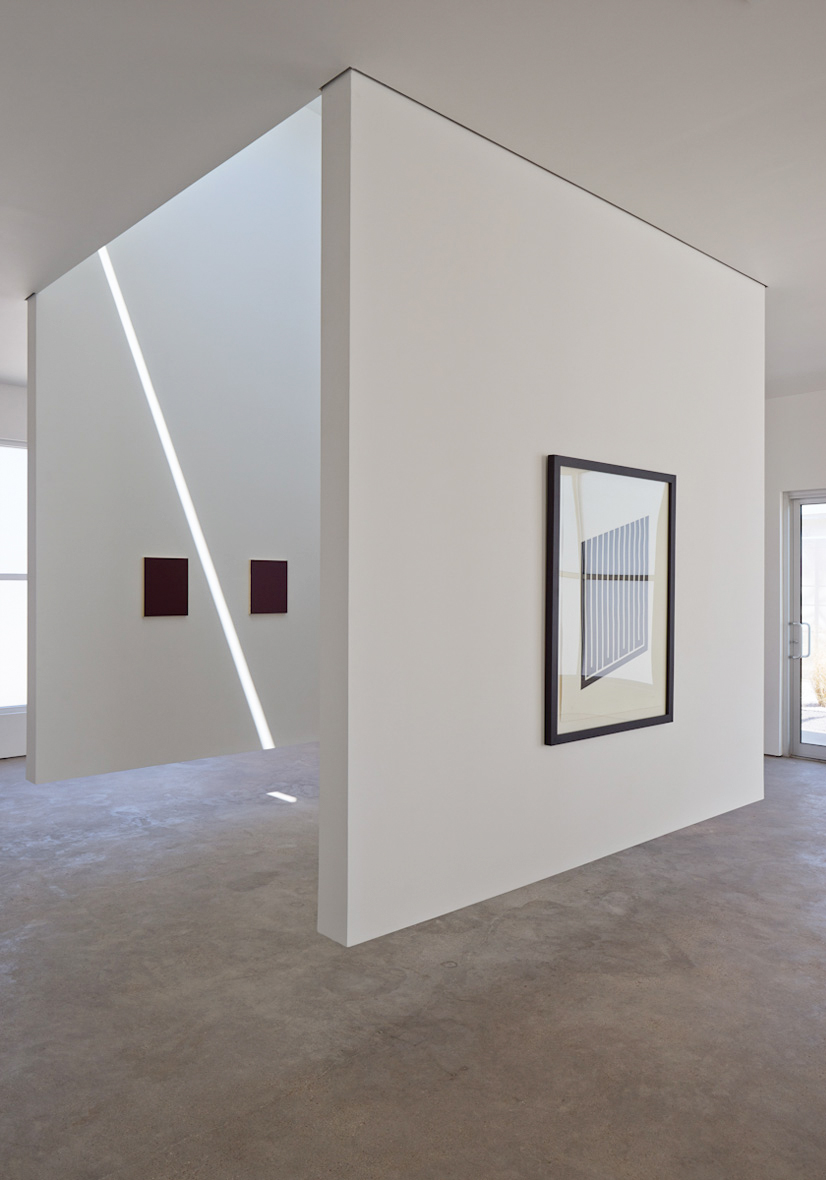
Inde/Jacobs Gallery, Marfa, 2015. (Photo: Åke E:son Lindman)
-
So how do you go about creating the feeling of emptiness?
First of all, all three of us are extremely interested in art. We don’t just buy art for decoration. We always think about the art in the places we design, creating space to be able to focus on individual works. In this respect, what might look empty to somebody else looks full to me.
Do ideas coming out of the Bauhaus, of functional efficiency married to a simplified, spare aesthetic, also influence your work?
I studied the Bauhaus, just like everybody else, but personally was much more interested in the work of Luis Barragán, for example, whose work was, to my mind, warmer than European modernism, which was always slightly cold for my taste. I don’t mean bad, but kind of machine-like, using cold materials. Also Donald Judd’s works and his living spaces had a much more profound effect on how I approach what we’re doing. There are not that many things in his spaces, but they are definitely warm, not cold.
Do you still see a combination of form and function as a key to good design?
Judd said that the difference between art and design is that design must work – art not. Which I think is very good. It’s a bit stupid to make a chair you can’t sit in. But then again, what is a chair? Judd’s essay called It’s Hard to Find a Good Lamp is a good text on this subject.
When we’re working on one of our designs or buildings, I think there are several things going on in. Firstly there’s a strong sense of logic and then maybe a little bit of order, because it’s easier to see beauty if there’s some kind of order around it. We try to have clarity – I really like it when the architectural plan is very clear.
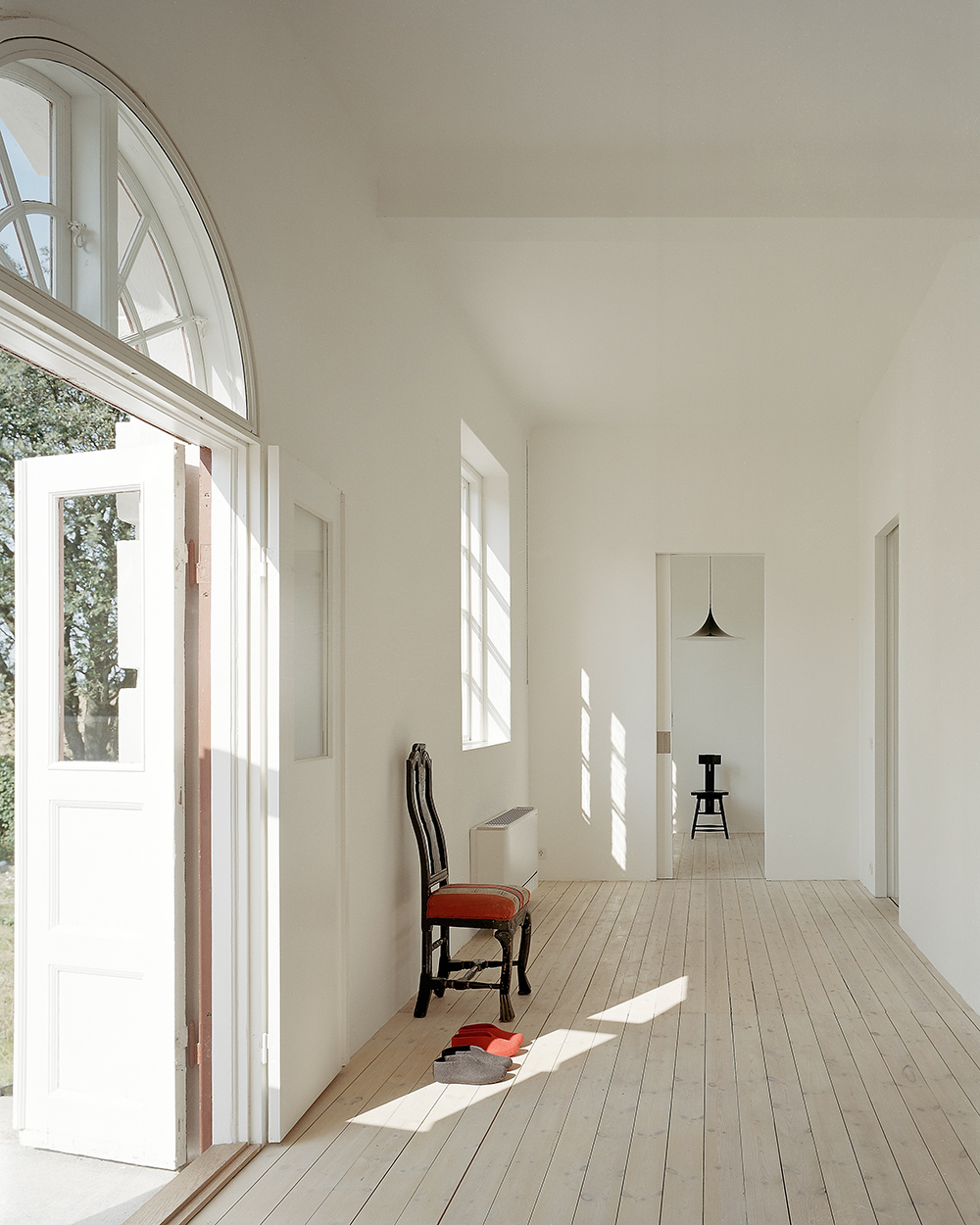
Råman Studio, South Sweden, 2002. (Photo: Åke E:son Lindman)
-
Also, one thing that a lot of people say about our work is that our places are very calm when you experience them in real life. But we come from Sweden, so I think there’s also a side that is joyful, maybe even funny sometimes. Like the work of the ceramicist Stig Lindberg, it’s kind of pared down and ordered, but with a softness to it – a happiness, like with the Kelly chairs we did for Tacchini in 2013.
With modernism this idea of cleanness, clarity and ultimately total transparency – that everything can be seen – was projected outwards onto modernist space: from Loos to Mies and beyond. Of course the stuff of real life intervenes to prevent this. I wondered if you see your work – which uses a lot of concealed, seamless storage space – as a pragmatic solution to living the simple life whilst still accommodating the stuff of the everyday.
Well I’m sitting here talking to you in my little four metre square library. In it I’ve one big Dieter Rams 606 bookcase filled with music, cookbooks, novels and other stuff.
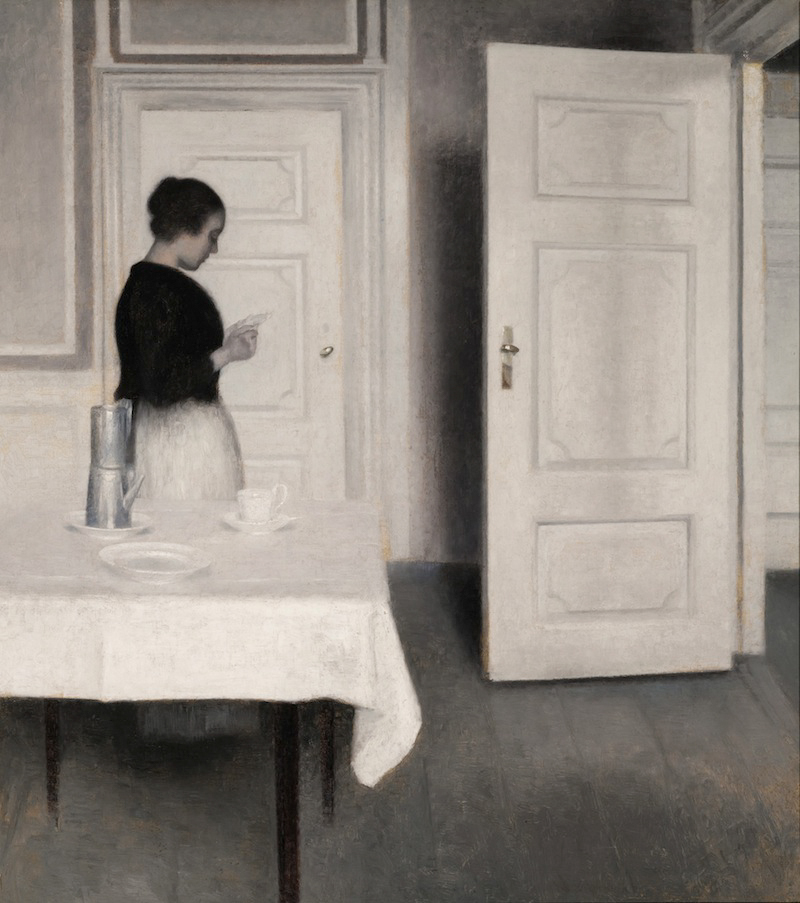
There’s no particular order to it: lots of books are piled on top of each other with little knick-knacks standing in-between. But the room is a pretty minimal room. What I’m trying to say is that of course we put a lot of storage in because we all have kids and grew up in big families. You need storage for life, but it doesn’t always need to be hidden.
Gaston Bachelard in his 1958 book The Poetics of Space referred to attics and cellars and even cupboards and drawers as the dream spaces in a house. I was interested as to whether you feel that it’s now the finishes and surfaces that function as the blank canvasses against which we project our dreams?
We don’t take away these dream spaces, but sometimes you just can’t put a cellar in a house because the clients don’t have the budget – it’s expensive! I simply like having a lot of storage because it is really good to store things! (laughs)
“Ida Reading a Letter”, painting by Vilhelm Hammershøi (1864–1916).
-
I’m thinking more about your commissions, like the Apartment with Brass Cube in Stockholm you did in 2013, which is all about seamless concealed space. At the high end of the market is it not the definition of luxury to seem like you have nothing?
Ha ha, I would say that only a very tiny part of the world’s wealthy live like that – a homeopathic-like quantity. Anyway my personal experience of the wealthy is that they don’t want the pared-down interiors that we make, they want big fluffy Italian ones. They tend to be conservative and have a lot of things on show.
But that particular client in Stockholm got so involved in the project she actually quit her job and started studying architecture! It’s a big apartment but not as expensive as it looks. We did not fill it with expensive furniture, for example. It is just a really, really beautiful space.
Maybe expensive is the wrong word, but it does look precious – in a good way – precisely because, for example, in the kitchen the utensils and foodstuffs are hidden.
I was in Japan once in a 1970s bar in Osaka, with just a bar top, nothing else. We ordered something and the bartender took all the ingredients out from storage, put them on the bar and then started making our drinks in front of us. It was a very intense experience. Very concentrated. Of course I understand if people like having all their pots hanging around, but in a kitchen everything gets dirty so you have to wash them before you cook. That’s a bit impractical. We have a similar kitchen and my wife and I put away everything after we use it, even the toaster.

-
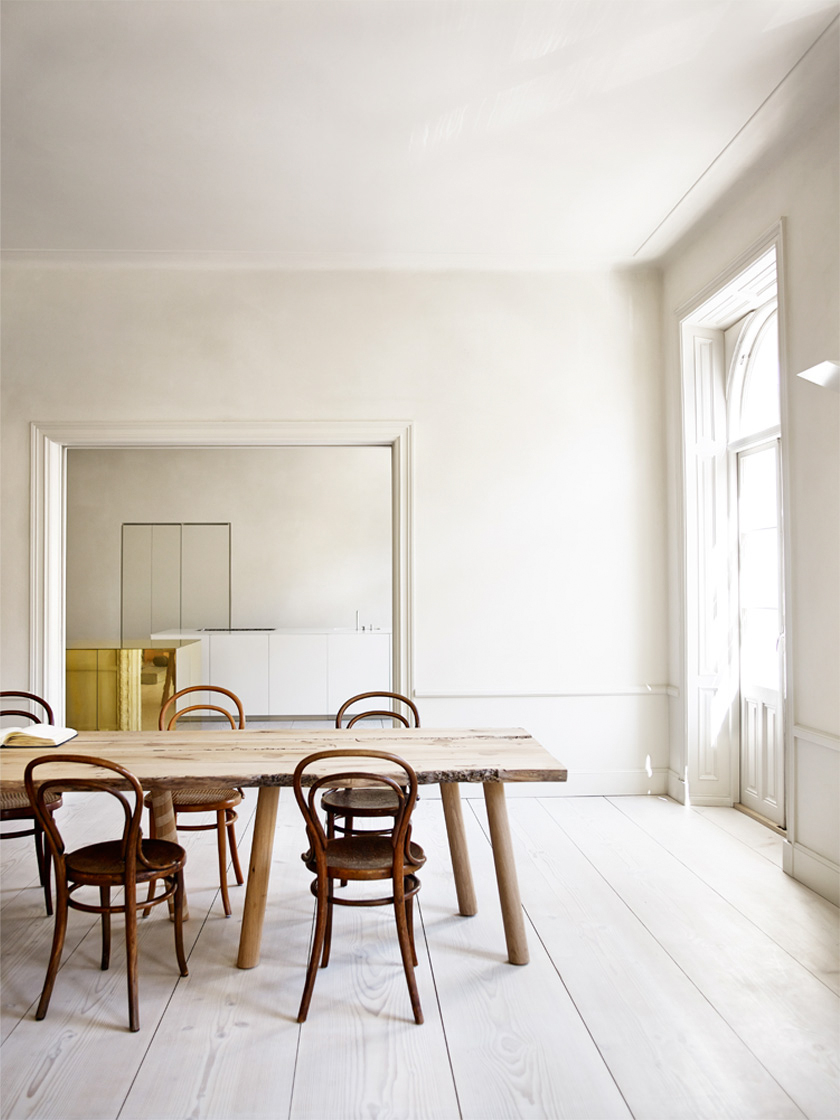
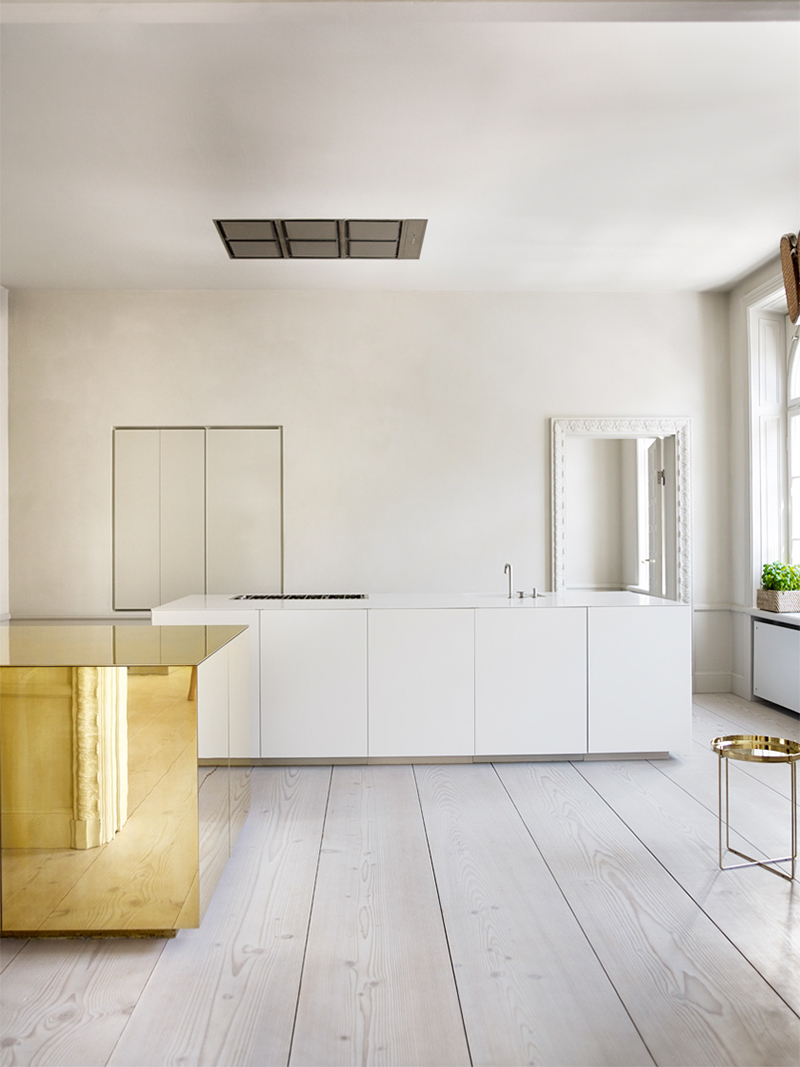
Apartment with Brass Cube, Stockholm, 2013. (Photos: Birgitta Wolfgang Drejer)
-
You put your toaster away?!
Yeah. Some of our friends think we are overly fanatical about that. But I have never seen a single toaster nice enough to leave out.
Perhaps the discussion is another one: that we’re not allowed to talk about beauty in everyday life because everything has been so over-theoreticised. When we make storage, we make it to store things. For my paintings, there’s a long wall outside this library where I’m sitting, of which the library door is part, which is about 13 metres long. On this wall are only four works, no more. You could easily put 30 pieces on it but because there are four, they become important. They are not just decoration, and every day I see them I think about them. But of course I need somewhere to store all the rest of the artworks when they’re not up – which I do in a wardrobe. It was made to have clothes in, but mine is full of art!It sounds like this relationship between things and space and storage for you has a lot to do with discipline.
One of our first assignments after finishing college was renovating an old schoolhouse for the Swedish ceramicist Ingegerd Råman and her artist husband Claes Söderquist. We learned a lot from working with them. They were an older couple who lived in a normal Judd-ish way – and were very precious about their things. I once asked: how come you have so many nice things? Everything in your home is beautiful. They said: it’s simple, you just decide never to buy anything you don’t really like. And from that point it takes about eight years. So I did and it works.
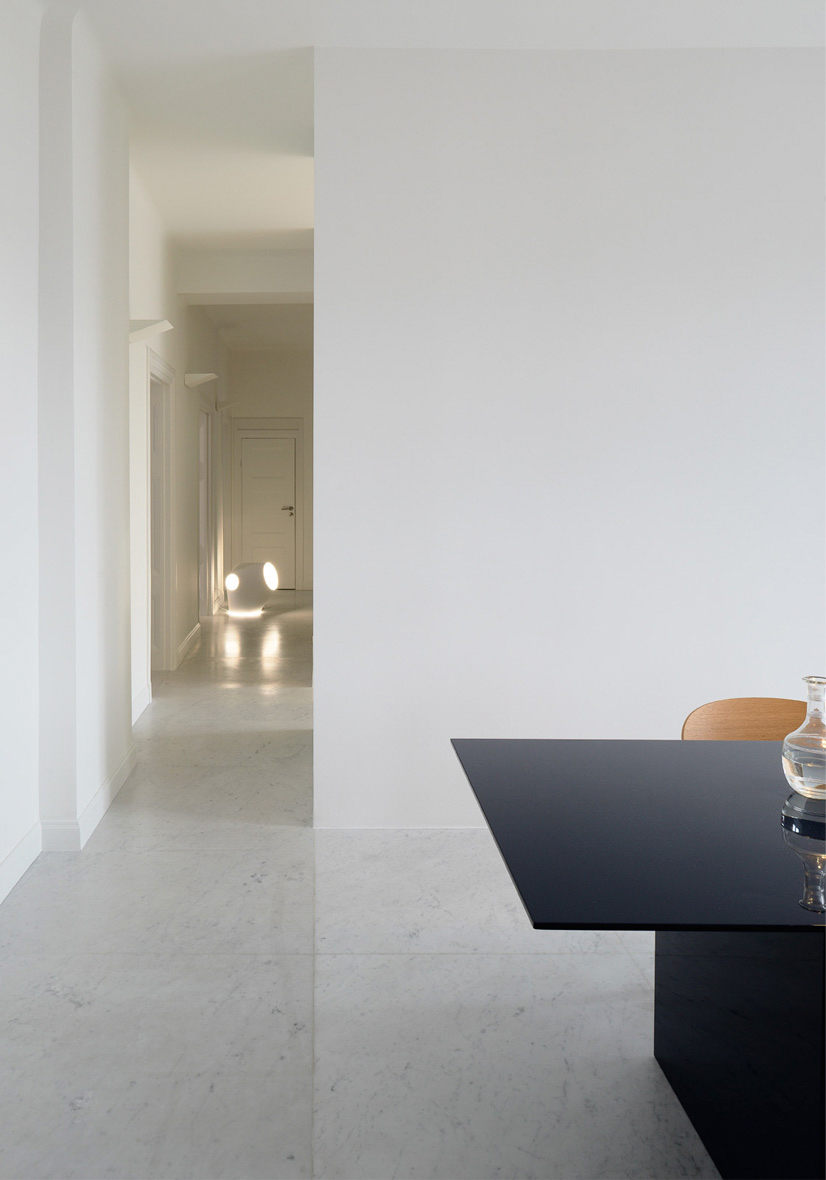
City Apartment, Stockholm, 2013. (Photo: Åke E:son Lindman)
-

How do you deal with the need to identify function with form in a stripped down aesthetic when you remove all the signifiers showing you how to use something – say in a fitted kitchen with no visible handles?
That’s because it is very difficult to find nice handles! Personally I don’t think we make it more difficult for people by taking away visible handles in a kitchen. They are there, just recessed. But if there is a built-in handle like this, then it’s really important that it feels good to your fingers when you open it. We spend a lot of time on things like that.
What about this idea of the house itself becoming the furniture? Storage used to be in sideboards, chest of drawers and so on, but today it is often embedded in the fabric of the house itself.
We really liked Japanese spaces when we were at college. All three of us spent time in Japan whilst studying and they’ve always had built-in storage. We also had a great teacher at school who did a course with us on the Shakers: how they put things together, They also had storage built into walls. It’s nice because, like you say, the apartment becomes the furniture.
-
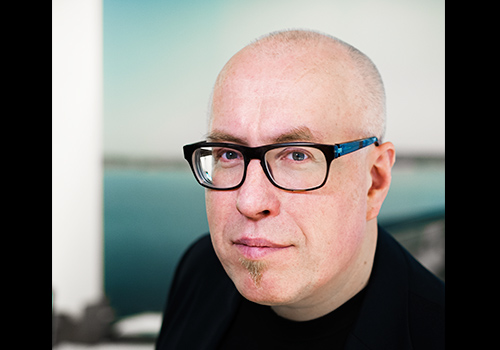
The architect and designer Eero Koivisto was born in Finland but grew up in Sweden. Educated at Konstfack University College of Arts, Crafts and Design in Stockholm, Aalto University School of Art and Design in Helsinki, and Parsons The New School for Design in New York, he founded Claesson Koivisto Rune in Stockholm together with Mårten Claesson and Ola Rune in 1995. This started as an architectural practice but has since become a multi-disciplinary office with equal emphasis on both architecture and design. Project categories include hotels, homes, shops, offices, exhibitions, kitchens, sanitary ware, tableware, glassware, furniture, textiles, tiles, lighting, electronics and candy.
Built projects have included the Tind Prefab house collection for Fiskarhedenvillan, Widlund House on Öland, Örsta Gallery building in Kumla, Sfera Building culture house in Kyoto and Nobis Hotel in Stockholm, whilst products have been designed for more than 80 international manufacturing companies from Arflex, Asplund, Blueair and Boffi to Skandiform, Skultuna, Swedese, Tacchini and Wästberg.
claessonkoivistorune.se
Does this throw much more emphasis on the detailing and the material finish?
It’s much harder to make a more pared-down space because you have to think so hard about how to make the joins and the craftsmanship. You spend a lot of time looking at the details. We have normal oak floorboards in our own home and the skirting is really tiny, about one centimetre wide, and angled towards the wall. My wife and I spent weeks designing that skirting – now we use it in all our projects. When you look at it, it’s almost not there.
Do you think your architecture reflects a desire for living a simple life, even helps people fulfill this?
One of the good things about the modern world is that there are many possibilities. There is not just one aesthetic or one idea, but many. What we do is maybe not for everybody. The really nice thing about the internet, Instagram, Facebook or whatever, is if you are into something really nerdy and specialist, you can connect with other people into that too. This just happens to be what we’re like. We might not be something for everybody, but we definitely mean a lot to some people. I
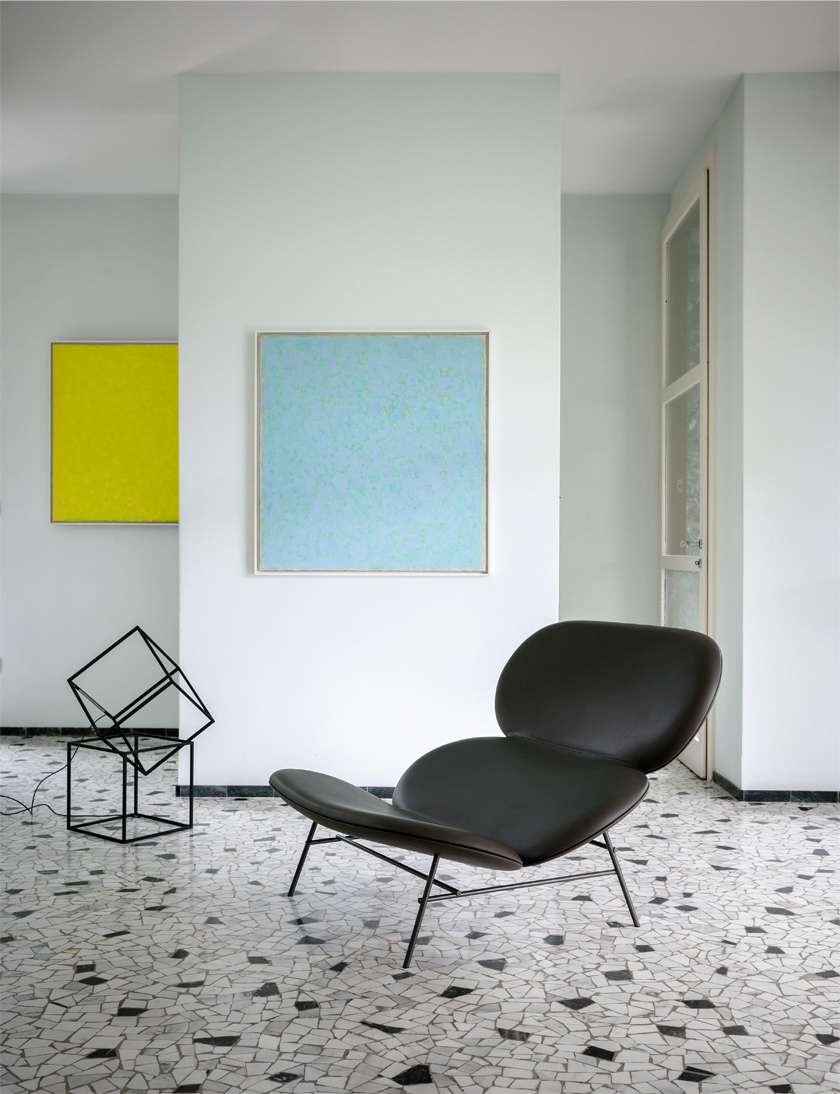
Kelly L Chair by Claesson Koivisto Rune for Tacchini, 2013. (Photo: Andrea Ferrari /Tacchini)
-
Search
-
FIND PRODUCTS
PRODUCT GROUP
- Building Materials
- Building Panels
- Building technology
- Façade
- Fittings
- Heating, Cooling, Ventilation
- Interior
- Roof
- Sanitary facilities
MANUFACTURER
- 3A Composites
- Alape
- Armstrong
- Caparol
- Eternit
- FSB
- Gira
- Hagemeister
- JUNG
- Kaldewei
- Lamberts
- Leicht
- Solarlux
- Steininger Designers
- Stiebel Eltron
- Velux
- Warema
- Wilkhahn
-
Follow Us
Tumblr
New and existing Tumblr users can connect with uncube and share our visual diary.
»Form follows feminine.«
Oscar Niemeyer
Keyboard Shortcuts
- Supermenu
- Skip Articles
- Turn Pages
- Contents


